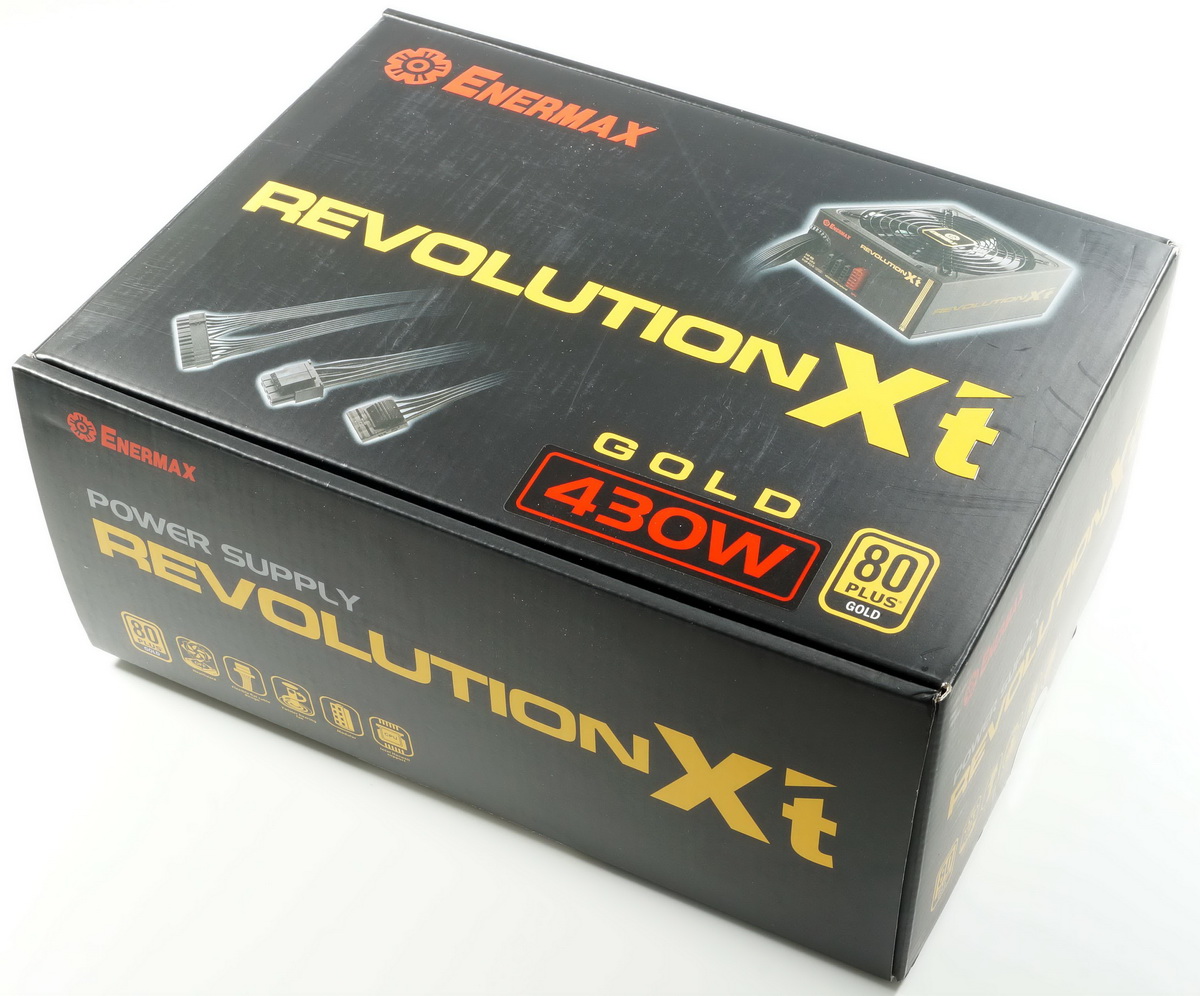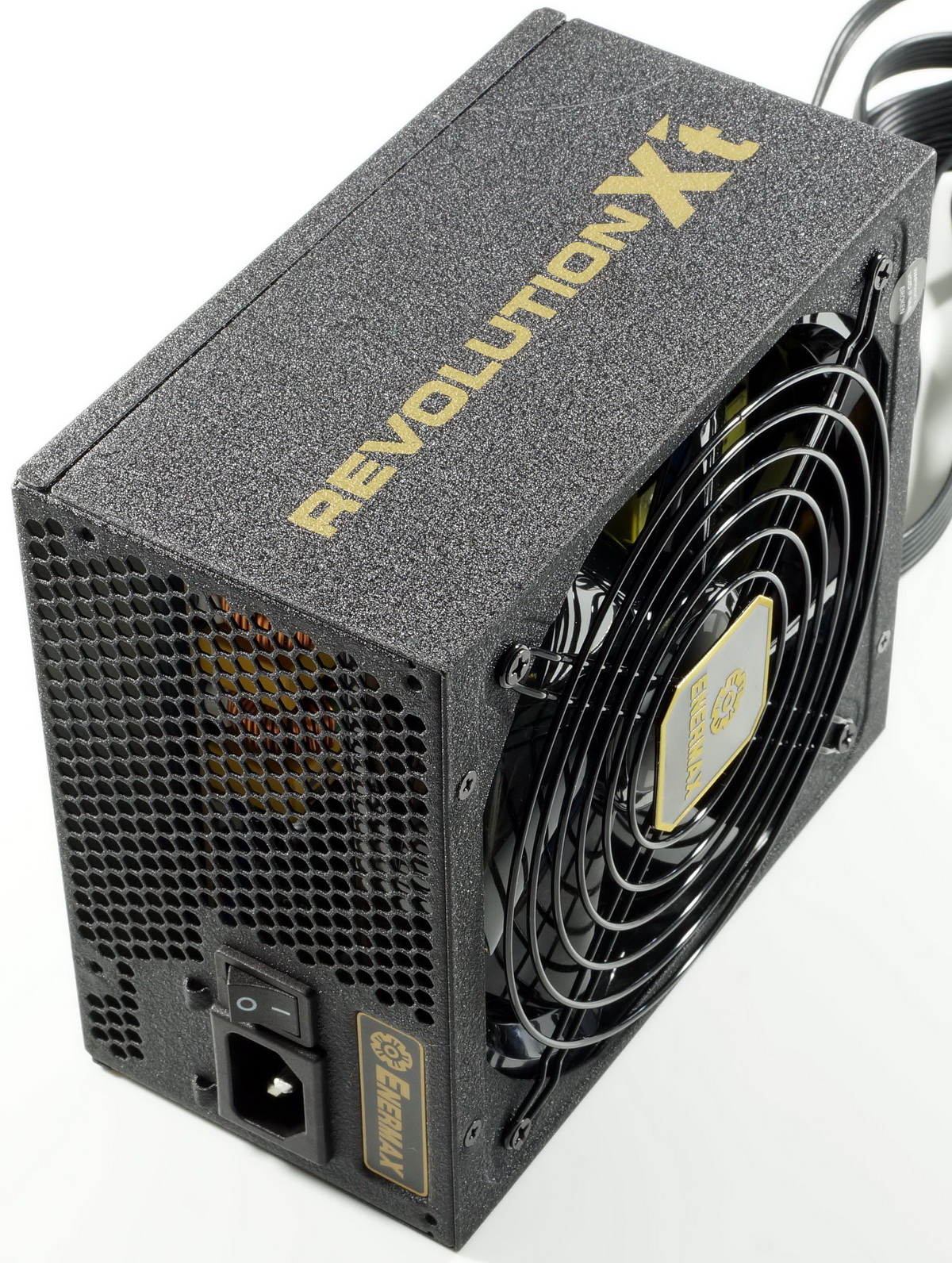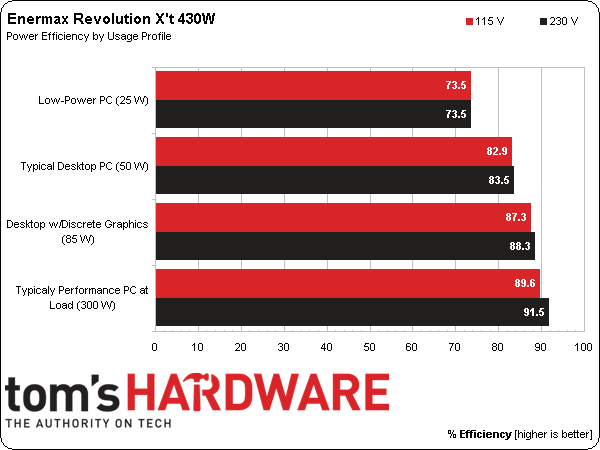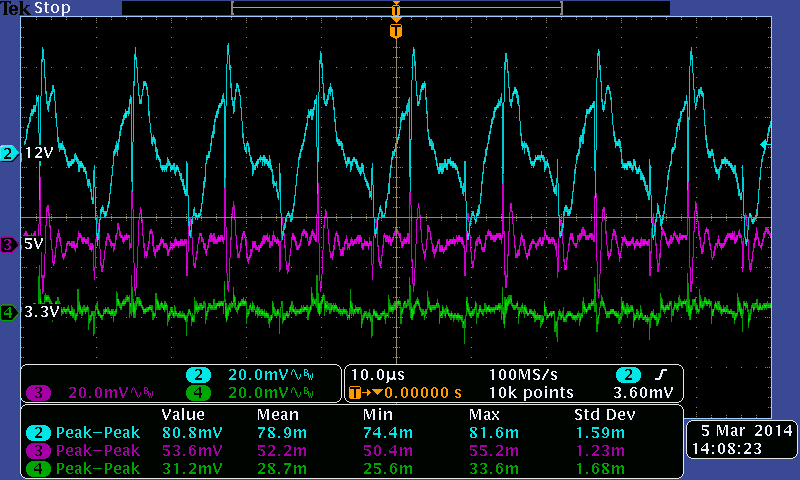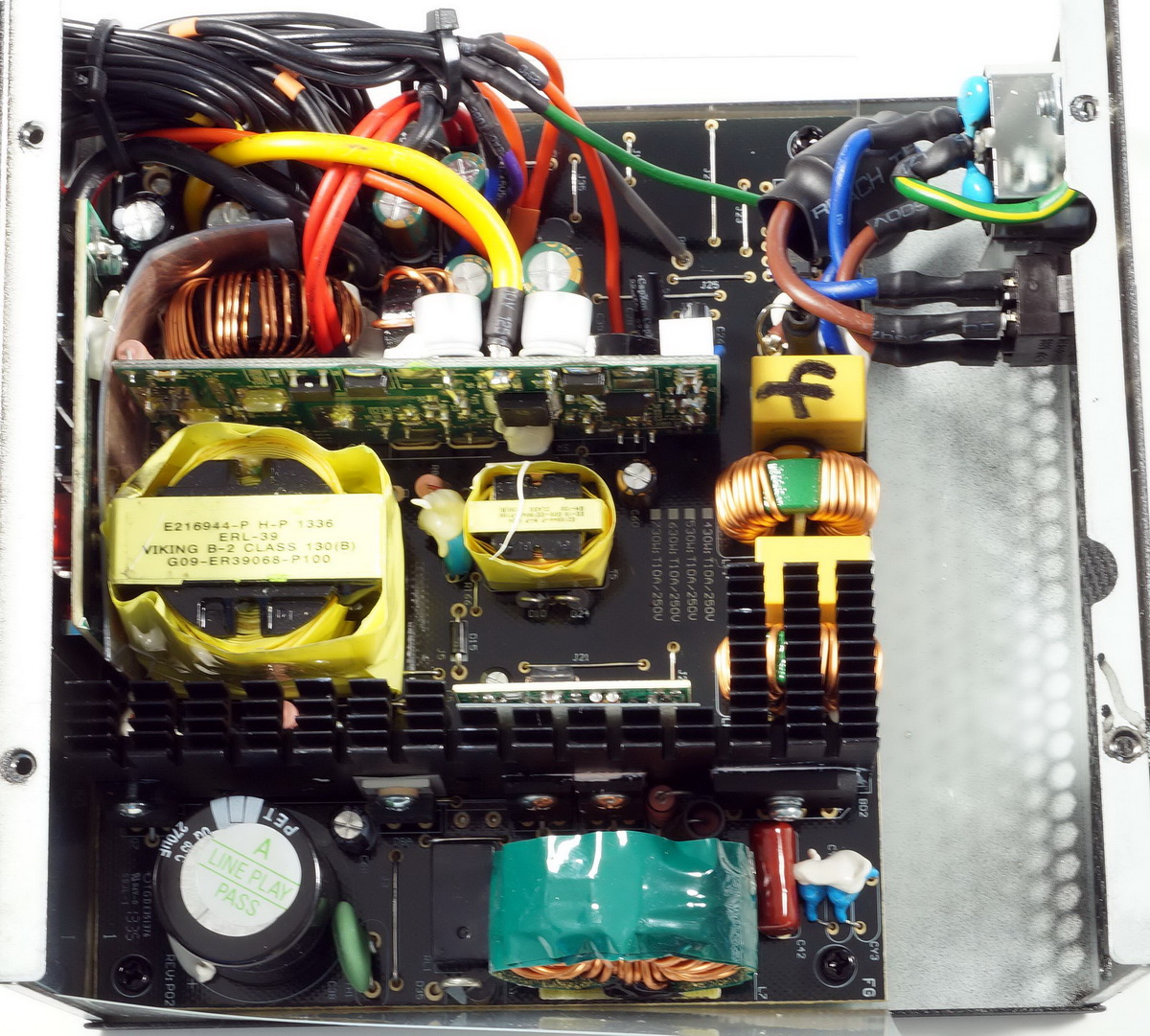Four 80 PLUS Gold Power Supplies Under 450 W, Reviewed
Although high-wattage power supplies get most of the glory, we take our hats off to small, efficient solutions offering more practical output. We take four sub-450 W PSUs and run them through our benchmark suite to see if we can determine a winner.
Enermax Revolution X't 430 W
Why you can trust Tom's Hardware
We haven’t heard much from Enermax lately. The company once had a pristine reputation though, so we wanted to check up on its status. The Revolution X't family is Enermax's second-best. Only the Platimax PSUs are a step up. Just one offering fit into our round-up: the 430 W Revolution X't, model number ERX430AWT.
This is a solid-looking power supply that makes a good impression. A rough, powder-coated surface, the piano-finish cooler, and semi-modular cabling all contribute to the sharp aesthetic. Cables are flattened, and their lengths can be considered generous. Further, the number of cables satisfies most requirements in this price class. There are two auxiliary 6+2-pin connectors for PCI Express-attached cards, an impressive eight SATA leads, and a quartet of four-pin Molex connectors.
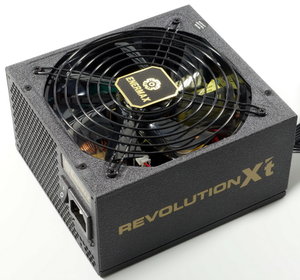
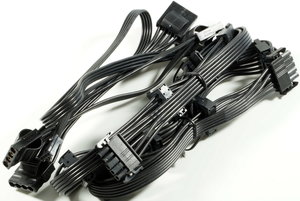
The sole +12 V rail outputs up to 420 W, which is almost 98 percent of the rated power output. It’s also supposed to be able to deal with up to 35 A. Enermax equips the Revolution X't with five-year warranty coverage, too.
| AC Input | 100-240 V, 47-63 Hz | |||||||
|---|---|---|---|---|---|---|---|---|
| DC Output | +3.3 V | +5 V | +12 V (#1) | +12 V (#2) | +12 V (#3) | +12 V (#4) | -12 V | +5 Vsb |
| 20 A | 20 A | 35 A | N/A | N/A | N/A | 0.8 A | 3.0 A | |
| Individual Output | Row 2 - Cell 1 | Row 2 - Cell 2 | 32 A | Row 2 - Cell 4 | Row 2 - Cell 5 | 9 W | 1 W | |
| Rail Utilization | Sys | Sys | CPU & VGA | |||||
| Combined Output | 100 W | 420 W | ||||||
| Total Continuous Output | 430 W | |||||||
| Peak Output | 475 W |
As usual, our first step is putting together a report of power efficiency according to the 80 PLUS specification. All PSUs in this round-up sport the Gold certification and, consequently, need to have an efficiency of at least 87 percent at 10-percent load and full output. The efficiency has to be an even higher 90 percent at a load of 50 percent.
The Revolution X’t 430 W hits those numbers almost exactly. That's not a bad thing, since the performance is good enough to qualify, but you certainly can't expect any additional headroom for higher efficiency than 80 PLUS Gold. Still, the Enermax PSU manages to do well at low loads. A reading of 83.5 percent at 50 W is certainly reasonable. This power supply gets its job done without any fuss in the other test categories as well.
Finally, we’re taking a look at ripple measurements. The curve isn’t smooth on all rails, but it’s acceptable at 3.3 and 12 V. Only the 5 V rail ends up north of the 50 mV peak-to-peak border, registering 52.2 mV. Still, this is within our measurement tolerance.
The Revolution X’t 430 W's fan is always on. Corsair's RM450 is the only power supply in our round-up with dynamic fan control. Sure, the operating noise level is a very low 32.3 dB(A) at 40 W, but it's still audible as a soft purring noise in quiet environments. This noise level also makes Enermax's submission one of the louder contenders in this comparison. At medium load, which we simulate with 200 W, noise jumps up a bit to 33.1 dB(A).
A Look at the PCB
Enermax's Revolution X't 430 W is built by CWT. As is the de facto standard in this efficiency class, it uses a DC-to-DC topology. At first glance, the PSU’s interior appears messy. But that doesn't mean the quality isn't there. The soldering work is certainly up to spec, though we do think there's room for improvement.
The input filter design is executed well. Two X and four Y capacitors in combination with two inductors and a diode provide all that’s needed. The primary capacitor is made by Panasonic and can most certainly be counted in the highest-quality category. Enermax does try to save some money with the secondary capacitors, though. The CapXon logo tells us they're of decent Chinese quality, but that’s about it.
Current page: Enermax Revolution X't 430 W
Prev Page Going Green: High-Efficiency Power Supplies Next Page Cooler Master V450SGet Tom's Hardware's best news and in-depth reviews, straight to your inbox.
-
iam2thecrowe they did ripple tests......they load tested them....... that's about as much as most readers need to know, that it wont blow up at 100% load and wont damage components with excess ripple. better than some reviews i have read "we hooked it up to a pc and it worked, give gold award..."Reply -
Onus Too bad Rosewill did not submit its Capstone for this roundup.Reply
It would have also been nice to see one of Seasonic's TFX units included.
-
xenol Ripple and line noise tests are the indicators of whether or not a power supply is made with solid parts or made with parts that just do the job and will probably last about a year of nominal use before releasing the magic smoke. If there's a lot of ripple, then the motherboard's house keeping circuitry is going to do a lot of work to keep stable voltages (especially when a difference of even 0.1V matters).Reply
Yes, these are supposedly made by top-tier manufacturers, but just because they have a reputation in the past doesn't mean they have a clean slate the entire way through. -
2Be_or_Not2Be I am just happy that we have some reviews of more reasonable P/S. Most people I know aren't running 1000W+.Reply
"In order to keep prices within reason, we settled on an 80 PLUS Gold rating as sufficient to meet our second demand."
I'm also happy with my 80+ Bronze P/S. Frankly, when you're buying smaller output P/S, I really don't know why anyone would need to get a Gold-rated one. -
Adroid Yea I am really confused by the huge price tags here.Reply
I paid like 70$ for a top of the line 660W seasonic platinum PSU after MIR. Needless to say I was patient and waited for a good deal, but I see high quality 650-750W PSUs for 80$ after MIRs regularly. -
hannibal Well good quality 400W PSU can be better choice than good quality 600W version. If it works within its best efficiency area.Reply -
Adroid Reply13725552 said:Well good quality 400W PSU can be better choice than good quality 600W version. If it works within its best efficiency area.
True, PSUs typically operate most effeciently at 80% load. I build gaming rigs though, so 400W is always too small.
I just expected smaller PSUs to be cheaper, that's all.
-
Drejeck There's a big mistake in considering 400W insufficient for gaming. I have a 770 phantom, a 750ti from kfa2 for physx, an i7 2600K at 4,4ghz, various neons, a load of fans, 4 SSDs, 2 black faex 2TB, an asus xonar d2x, and still I can't reach over 420W of power consumption in torture tests, measured with the highest end APC Smart (865W UPS). I have a Corsair 850W Gold, which is a Seasonic rebrand. And I'm ashamed I went so much overkill with my PSU.Reply
This review feels like useless. There's no ripple testing, whatever the second comment user says. Get some review from Guru3D and you'll see.
Based on words I can't compare with other products on other reviews, so this is quite a fail.
